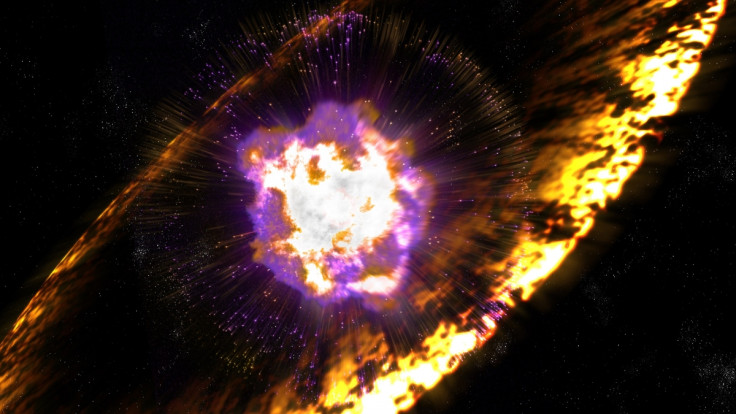Solved: The mystery of how planets are born when supernovas explode
Scientists have studied the process of planet formation in the aftermath of a supernova explosion.

Scientists might have just solved the mystery of how planets can form in the wake of a supernova explosion – the explosion of a star much more massive than our sun. Their findings may provide a new understanding of how planets are born throughout the whole universe.
Twenty-five years ago, astronomers began identifying planets outside the solar system, orbiting tiny and dense neutron stars known as 'pulsars'. These pulsars are what remains after the explosion of supernovas. Scientists have long puzzled over how planets managed to form around these stars.
"A pulsar is a dead star – the original star exploded and you have a tiny remain which isn't like a glowing star at all, it's more like a ball of dense matter," astronomer Jane Greaves, of the University of Cardiff, told IBTimes UK. "Looking at a pulsar is an opportunity to study a very extreme kind of environment for planet formation".
Greaves is the author of a study now published in the Monthly Notices of the Royal Astronomical Society, which looks at the Geminga pulsar located 800 light years away from us, in the constellation of Gemini.
Raw material trapped around Geminga
In 1977, scientists thought that they had identified a planet orbiting around Geminga, but discarded the idea as they couldn't confirm it. The new study shows they might actually have been right.
Greaves and her co-author Wayne Holland, of the UK Astronomy Technology Centre in Edinburgh, observed Geminga using the James Clerk Maxwell Telescope on Hawaii, which operates at submillimetre wavelengths.
For planets to form, a pulsar needs to capture a lot of raw material in its orbit - a phenomenon which had not been observed before. Here, the researchers looked for evidence of raw material around Geminga.

The images captured with the telescope showed a signal towards the pulsar, plus an arc around it. Greaves explained: "This seems to be like a bow-wave - Geminga is moving incredibly fast through our Galaxy, much faster than the speed of sound in interstellar gas. We think material gets caught up in the bow-wave, and then some solid particles drift in towards the pulsar."
Taken all together, the trapped interstellar raw material adds up to at least a few times the mass of the Earth and would be sufficient to create future planets.
"We think that the Geminga pulsar collected the surrounding material, particularly small rocks, and these may have gone into orbit around it. And so we have a situation where the material is there to make a small rocky planet," Greaves added.
The team will keep working on the subject, trying to get better images of Geminga in the hope of seeing more space-grit orbiting nicely around the pulsar. Continuing this research is important as it may shed light on how planets form across the universe in extreme situations - and tell us more about how the planets in our own solar system formed.
"We still don't really understand how stars like this one are able to make planets. Even when we look at 'normal' stars like the sun we don't really understand the process of planet formation. It's exciting to investigate how particles fix together in a very exotic situation, around a pulsar. This might allow us to understand the whole process better and to see what's possible or not in terms of planet formation," she concluded.
© Copyright IBTimes 2025. All rights reserved.






















